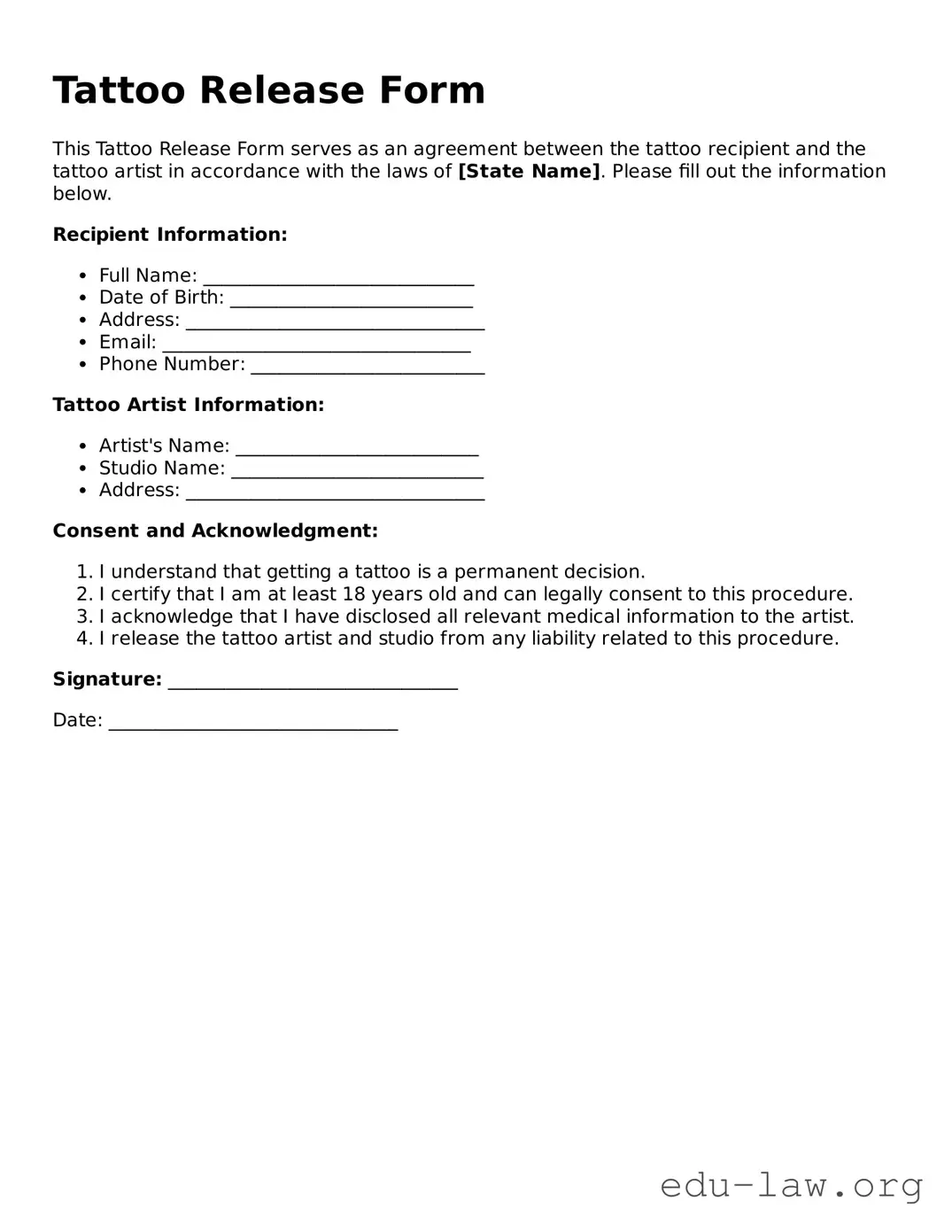What is a Tattoo Release form?
A Tattoo Release form is a legal document that grants permission for a tattoo artist to create and showcase a tattoo on an individual. It outlines the rights of both the artist and the client regarding the artwork's use and reproduction. This form helps protect the artist's intellectual property and ensures that the client is aware of the implications of getting the tattoo.
Why is it important to sign a Tattoo Release form?
Signing a Tattoo Release form is crucial for both parties. For the artist, it secures their rights to the design and provides a clear understanding of what they can do with images of the tattoo. For the client, it ensures that they acknowledge the creative work of the artist and release any claims related to the use of the tattoo, such as in promotional materials or portfolios.
Can I modify a Tattoo Release form?
Yes, you can modify a Tattoo Release form as long as both the artist and the client agree to the changes. It is advisable to discuss any modifications before signing to ensure everyone is clear on their rights and responsibilities. Always keep a copy of the signed document for your records.
Is the Tattoo Release form legally binding?
Generally, a Tattoo Release form is legally binding if it meets certain criteria, such as voluntary consent and the explicit choice of both parties. While each state may have different laws regarding enforceability, properly executed release forms are generally recognized in court as long as they do not violate public policy.
What happens if I do not sign a Tattoo Release form?
If you choose not to sign a Tattoo Release form, the tattoo artist may refuse to do the tattoo. Without this agreement, the artist is at risk of misunderstandings regarding ownership and use of the tattoo design. Clients must be aware that refusal to sign may prevent them from obtaining a desired tattoo.
Does a Tattoo Release form protect against future claims?
A well-drafted Tattoo Release form can help protect against future claims related to the use of the tattoo. It establishes that the client understands the artist's rights and has agreed to the terms laid out in the form. However, it may not cover all potential legal disputes, so it is essential for both parties to maintain open communication.
Who should keep the Tattoo Release form after it is signed?
Both the tattoo artist and the client should keep a copy of the signed Tattoo Release form. This ensures that each party has access to the agreement in case any questions or disputes arise in the future. Each party should file the document safely for easy retrieval when needed.
